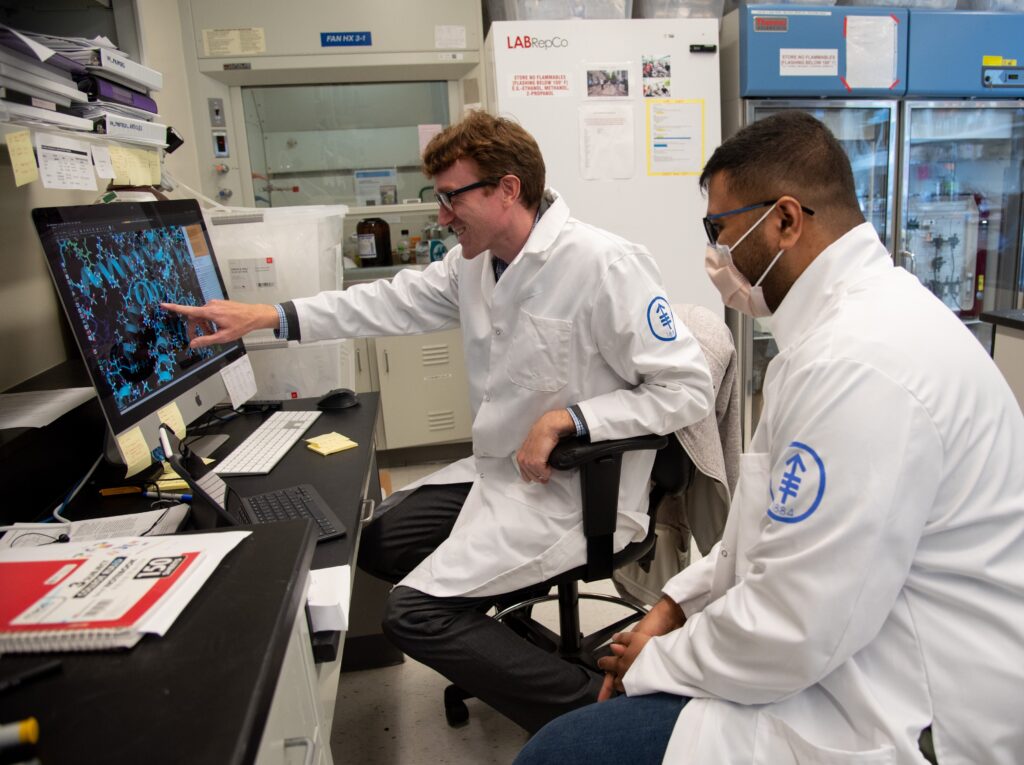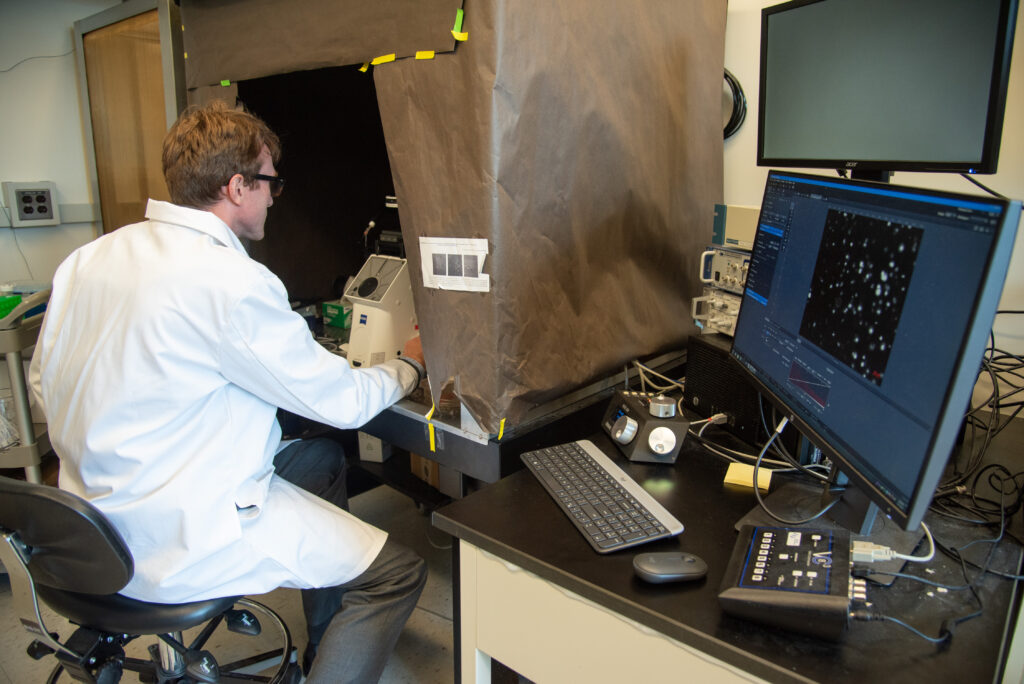Richard Hite, PhD ‹ Back To 2022 Winners
2022 Winners
Assistant Member
Structural Biology
Memorial Sloan Kettering Cancer Center
Vision
To understand how critical metabolites are transported in cells, we will use high-resolution electron cryomicroscopy approaches that will reveal the structures of metabolite transporters in an ensemble of conformational states. These structures will provide a detailed picture of how these transporters work provide the resources needed for cancer cell growth. Critically, these structures will also provide a blueprint for how to stop these transporters from functioning and starve cancer cells.
Richard Hite is an Assistant Member in the Structural Biology Program at Memorial Sloan Kettering Cancer Center where his lab studies intracellular metabolite transport. Dr. Hite received his B.S. from Emory University and his Ph.D. in the laboratory of Dr. Thomas Walz at Harvard Medical School. As a Helen Hay Whitney Fellow in the laboratory of Dr. Roderick MacKinnon at Rockefeller University, Dr. Hite used structural and functional approaches to elucidate the mechanisms that regulate the activity of ligand- and voltage-gated potassium channels. As an independent investigator, Dr. Hite’s lab has investigated the mechanisms that underly the function of intracellular ion channels and transport proteins. Dr. Hite’s lab employs high-resolution electron cryomicroscopy approaches to determine structures of proteins in diverse functional states that reveal detailed insights into their function. Dr. Hite was named a Searle Scholar and is the recipient of the Tri-Institutional Breakout Award for Junior Investigators.
Mechanisms of Mitochondrial Metabolite Transport
Cancer is a disease of dysregulated growth – cells growing when and where they should not. One of the mechanisms that cancer cells employ to enable their dysregulated growth is through the rewiring of their metabolism to ensure access to the nutrients needed for growth. Although rewiring provides a growth advantage, it also imparts limitations as cancer cells can become addicted to specific nutrients. Recent evidence has identified two amino acids – aspartate and serine – as being critical for cancer cell growth and survival. Notably, these amino acids are synthesized in a different compartment of cell from where are needed for growth, providing a potential avenue for starving cancer cells of needed nutrients, and killing them.
“The Prize will allow us to establish a new area of research in the lab focusing on how cancer cells transport metabolites to sustain their growth and how we can develop novel treatments that can block these processes to kill cancer cells.”
While the identities of the transporters that move aspartate and serine between cellular compartments are known, how they function is not well understood. In this proposal, we aim to understand how aspartate and serine are transported across the mitochondrial membrane. We will achieve these aims by determining the precise three-dimensional structures of these transporters. By solving structures of these transporters, we will not only visualize how they function, but also gain insights into how we might be able to generate novel therapeutics that can block their activity and target cancer cells specific need for aspartate or serine.
“Innovation is the development of novel approaches to tackle foundational questions and establish new paradigms of understanding.”

